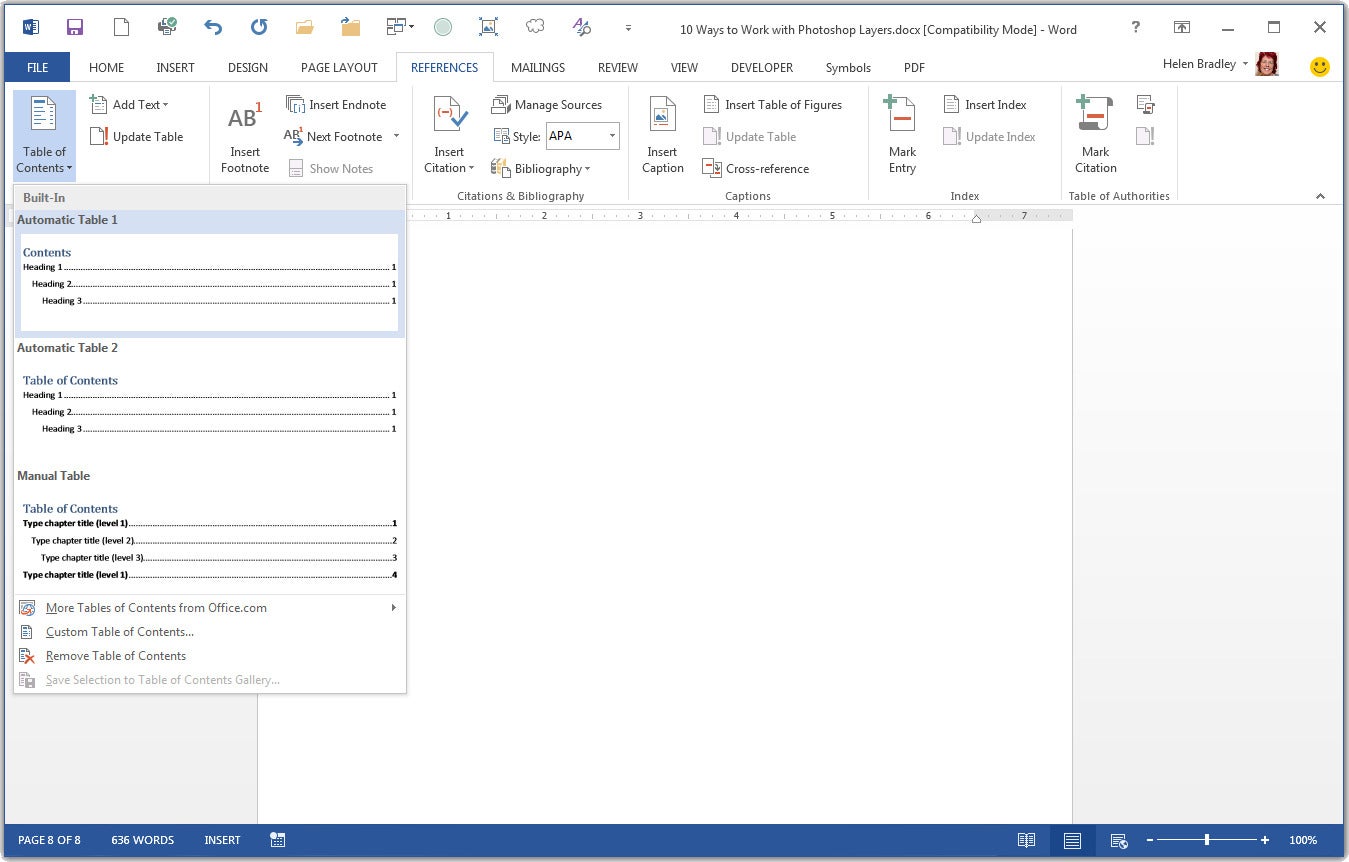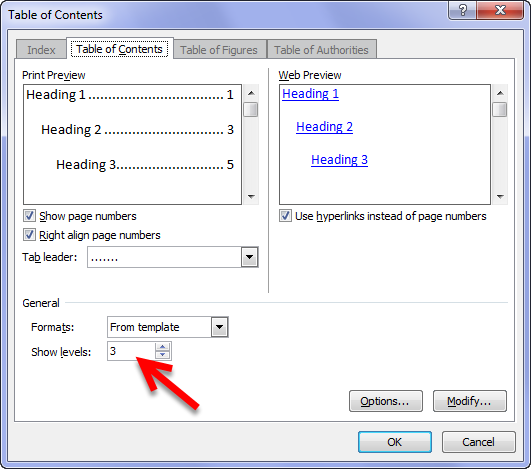
- WORD DOCUMENT HEADINGS TABLE OF CONTENT UPDATE
- WORD DOCUMENT HEADINGS TABLE OF CONTENT MANUAL
Understand that this process is far more time consuming than using the automatic option that relies on the heading styles. Word will place sample text into the table of comments that you can edit.
WORD DOCUMENT HEADINGS TABLE OF CONTENT MANUAL
Manual Table: With this style, you can edit the table with whatever text you want to add.  Automatic Table 2: With this style of table, the title will be “Table of Contents”. Automatic Table 1: With this style of table, Word will use “Contents” as the title (as shown in the image above). (You can customize the look of the table of contents as well, which we’ll explain later.) You can select between two types of preformatted table of contents in Word and a manual entry option. Step 3: Pick the Style of Table of Contents You Want to Use In the submenu, look for the Table of Contents section. Click the References menu in the upper section of the screen in the middle. Place the cursor in your Word document where you want to insert the table of contents. Otherwise, some people will choose to place the table of contents at the beginning of the main document or (far less frequently) at the end. If your document has a title page, you may want to place the table of contents immediately after the title page.
Automatic Table 2: With this style of table, the title will be “Table of Contents”. Automatic Table 1: With this style of table, Word will use “Contents” as the title (as shown in the image above). (You can customize the look of the table of contents as well, which we’ll explain later.) You can select between two types of preformatted table of contents in Word and a manual entry option. Step 3: Pick the Style of Table of Contents You Want to Use In the submenu, look for the Table of Contents section. Click the References menu in the upper section of the screen in the middle. Place the cursor in your Word document where you want to insert the table of contents. Otherwise, some people will choose to place the table of contents at the beginning of the main document or (far less frequently) at the end. If your document has a title page, you may want to place the table of contents immediately after the title page. 
Step 1: Decide Where to Place the Table of Contents Following this process throughout the document will greatly simplify the process of creating a table of contents later.

Click on Heading 1, Heading 2, or Heading 3 to assign that style to the highlighted text. From the popup menu, left-click on Styles. To add heading styles to your Word document, highlight the text you want to use as a header and right-click on it. It then pulls the information in the headings to create the listings for the table of contents. The table of contents feature in Word will scan your document, looking for the heading styles you’re using in the document. You may even find after writing the document that you don’t really need a table of contents because the document isn’t long enough. For this reason, we would recommend writing, editing, and formatting your document completely first and inserting the table of contents as the last step.Īs mentioned earlier, Word will edit the table of contents to reflect the editing changes you make to the document, but the process just works better when adding the table of contents after writing the majority of the document. Step 0: Format the Word Document Properlyīefore you can set up a Word table of contents, you have to be certain to format your document properly.
WORD DOCUMENT HEADINGS TABLE OF CONTENT UPDATE
Best of all, when you use the table of contents feature in the app, Word allows you to update the table of contents with one click to reflect any editing changes you make in the main document. Setting up a table of contents in Word is an easier process than you may think. When the reader will be using Word to view your document, the Word table of contents can work like a navigation system, allowing the reader to click on the specific listing in the table to jump to the related area of the document. Through this table, you can provide a brief outline of the layout of the document, complete with the main points.
Please note, if you add additional headings after you create the table of contents you will need to UPDATE the table (designated by green arrow in picture above).For long documents you are creating in Microsoft Word, it’s helpful for readers when you add a table of contents. I recommend using one of the first two options which are automatic tables. Select the references tab, then select table of contents. Once the blank page has been created, make sure cursor is at the very start of the page. At the start of the document, select insert, then page break – this step is only necessary if a blank page was not left intentionally for the table of contents. This will create a navigation pane list – this will allow the reader to navigate through topics as their leisure. Heading 3 – Level 3 (or subtopic to the subtopic, or 3 rd degree from main heading). Select which heading style you would like to apply. 
You will locate styles on the right hand side.
Once text is highlighted, make sure the “HOME” tab has been selected. Highlight text that you would like to designate as a heading – options are “Heading 1, Heading 2, and Heading 3”. Solution home Microsoft Office Microsoft Word Creating Headings & Table of Contents in Word








 0 kommentar(er)
0 kommentar(er)
